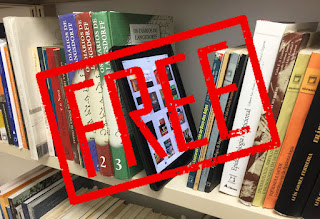Amazon is the biggest ebook retailer and it has a free app which allows you to get books on non-Kindle devices. PCs, iOS computers, Android tablets and SmartPhones. You can even read on Linux and Ubantu using the Cloud Reader and read offline by using the Cloud Reader's 'Download and pin book' option.
Where can you find free ebooks at Amazon?
Try going to one of these links which will take you to the lists of the top 100 free ebooks:
- Best Sellers in Action & Adventure Fiction
- Best Sellers in Action Thriller Fiction
- Best Sellers in Crime Action Fiction
- Best Sellers in Fantasy Adventure Fiction
- Best Sellers in Fantasy
- Best Sellers in Genetic Engineering Science Fiction
- Best Sellers in Historical Fiction
- Best Sellers in Horror
- Best Sellers in Humor & Satire Fiction
- Best Sellers in Men's Adventure Fiction
- Best Sellers in Mystery Action Fiction
- Best Sellers in Mystery, Thriller & Suspense Action Fiction
- Best Sellers in Paranormal Romance
- Best Sellers in Romance
- Best Sellers in Romantic Suspense
- Best Sellers in Science Fiction
- Best Sellers in Science Fiction Adventure
- Best Sellers in Science Fiction & Fantasy
- Best Sellers in Suspense Action Fiction
- Best Sellers in Technothrillers
If this list doesn't include the genre you want, use the links at the left of any of the pages to select the genre you want but make sure you select the 'Top 100 free' tab.
Of course if a book isn't in the top 100, it won't be shown. In that case you'll have to get a link from one of the many book promotion websites. The best known is Bookbub. My personal favorite is Book Barbarian because I like Science Fiction books. Both of these sites will send you a daily email of the genres you like. There are many others. Try a Google search for 'book promotion sites'.
Kindle books are in MOBI or AZW3 format.
What about free ebooks at iBooks?
On a Mac, launch iBooks (if you don’t have it, it's a free download). Click on iBooks Store. On the right, you’ll see a list of 'Quick Links'. Click or search for 'Free Books'.On an iOS device, tap 'iBooks', tap 'Featured'. The ones marked 'GET' where the price is normally shown are free. Again, if a book is not 'Featured' you'll need a link or the name of the book to search for it. Here's two of our free ebooks at iBooks - Immortality Gene (a technothriller) and Raging Storm (a paranormal romance).
iBooks are in EPUB format.
Other free ebook sources
Barnes and Noble and Kobo also have free ebooks. Kobo supply ebooks to many other retailers. In the UK that includes Tesco, Sainsburys and WH Smith. In the US Kobo supply ebooks to Walmart.
Smashwords is a great site for ebooks.
Find Smashwords at smashwords.com
Its advantages are that:
- You can pay via PayPal and for free ebooks you don't have to provide any financial details.
- It has a price section which includes a prominent FREE area.
- It's ebooks are available in multiple formats. MOBI, EPUB and others.
- It's also often a fraction cheaper than other retailers for paid books.
- You can actually earn money by promoting ebooks there.
- You may find an author will give away coupons which let you have free or reduced price ebooks there.
- Unlike other retailers Smashwords ebooks don't have DRM copy protection built in so you can move your ebooks onto other devices.
What about Google Play ebooks?
That one's easy - go to Google Play Books and search for 'Free ebooks'.
Project Gutenberg offers out of copyright books
Find it at gutenberg.org. It offers more than 53,000 free, out-of-copyright books in multiple formats.
What if I have a Kindle Fire and want to read an EPUB ebook?
It's not surprising that Amazon don't offer an EPUB reading app in their store but that doesn't mean you can't install one. You'll need to 'sideload' the app. Get instructions here.
What if I have an e-ink Kindle and want to read an EPUB ebook?
You can't do that. You'll have to convert the ebook to MOBI format then email the ebook to your Kindle device email address. An open source (free) program called 'calibre' can do that if the file is not protected with DRM (all Smashwords ebooks are DRM free).
What if I want a PDF ebook?
Yes, it's possible BUT you need to be aware of the risks.
- PDF files are designed for printing not for e-reading. Although most e-reading devices will read them, it's a clumsy process involving lots of scrolling since the text won't flow as it's enlarged.
- PDF files are frequently infected with malware. Why do you think so many pirate sites are out there offering free ebooks? They want to infect your computer. If you MUST have a PDF file, get it from a non-pirate site which won't infect you such as Smashwords.
- PDF pirate copies of ebooks are stealing from the author.
|

















